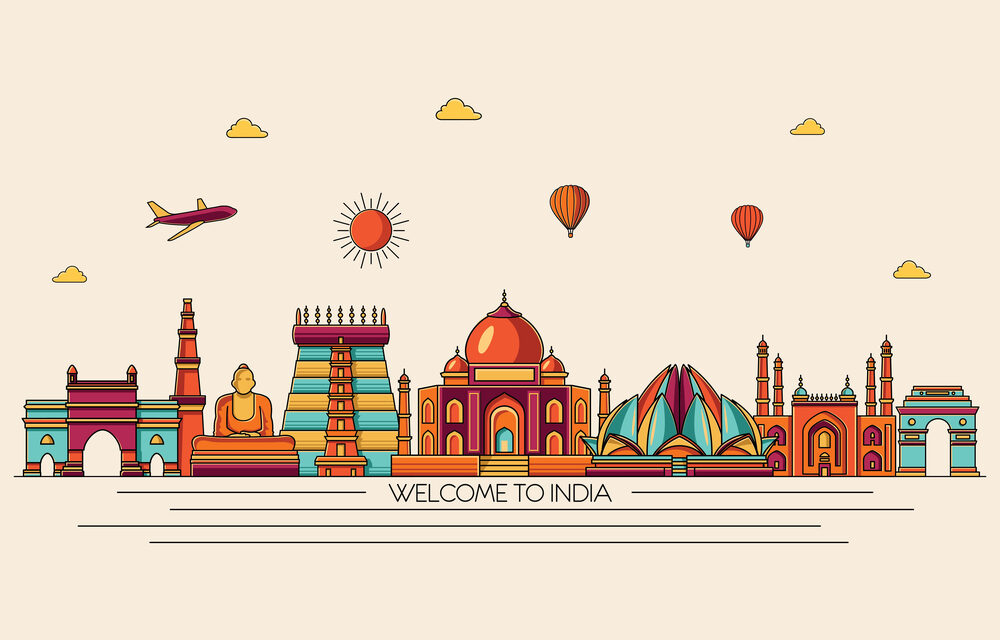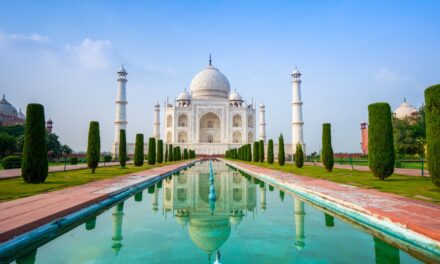India is a land of incredible diversity, not just in culture, food, and traditions but also in its geography and climate. From snow-capped mountains to sun-kissed beaches, dense forests to vast deserts, every corner of India offers unique travel experiences. However, due to the country’s varied climate zones, the best time to visit each destination can differ significantly. Understanding India’s seasons and how they influence travel can help you plan a trip that maximizes enjoyment and minimizes challenges. This blog explores the best times to visit some of India’s key destinations, season by season.
Understanding India’s Seasons
India experiences three primary seasons:
- Summer (March to June): Characterized by rising temperatures, especially in northern and central India. Hill stations and high-altitude regions become popular escapes.
- Monsoon (July to September): Marked by heavy rainfall, this is the season when India’s landscapes come alive with lush greenery.
- Winter (October to February): With cool and pleasant weather, winter is ideal for most destinations across the country.
Summer Escapes: March to June
1. Himachal Pradesh and Uttarakhand
Why Visit: These northern states are home to some of the most picturesque hill stations in India. During summer, their cool climate provides a refreshing respite from the heat of the plains.
Top Destinations:
- Shimla, Manali, and Dharamshala in Himachal Pradesh
- Mussoorie, Nainital, and Auli in Uttarakhand
Activities:
- Trekking in the Dhauladhar and Garhwal ranges
- Exploring colonial-era architecture in Shimla
- Paragliding in Bir-Billing (Himachal Pradesh)
- Boating on Naini Lake (Uttarakhand)
2. Ladakh (Jammu & Kashmir)
Why Visit: Known as the “Land of High Passes,” Ladakh’s rugged terrain and pristine beauty make it a summer favorite.
Top Attractions:
- Pangong Lake and Tso Moriri
- Leh Palace and monasteries like Hemis and Thiksey
- Nubra Valley’s sand dunes
Activities:
- Motorcycle tours through mountain passes
- River rafting on the Zanskar River
- Trekking to Markha Valley
3. Kerala’s Hill Stations
Why Visit: Munnar, Wayanad, and Thekkady offer a cooler side of Kerala, known for its lush tea gardens and wildlife sanctuaries.
Activities:
- Walking through tea plantations
- Wildlife spotting in Periyar Tiger Reserve
- Staying in charming colonial bungalows
Monsoon Adventures: July to September
1. Goa
Why Visit: While Goa is synonymous with sunny beaches, the monsoon unveils its green and serene side.
Top Experiences:
- Visiting Dudhsagar Waterfalls
- Exploring spice plantations
- Enjoying the vibrant monsoon festivals like Sao Joao
2. Meghalaya
Why Visit: Often called the “Abode of Clouds,” Meghalaya is enchanting during the monsoon.
Top Attractions:
- Living Root Bridges in Cherrapunji and Mawlynnong
- Waterfalls like Nohkalikai and Seven Sisters Falls
- Dawki River’s crystal-clear waters
Activities:
- Caving in Mawsmai and Liat Prah
- Experiencing monsoon treks
3. Western Ghats
Why Visit: The monsoon breathes life into the Western Ghats, creating verdant landscapes ideal for nature lovers.
Key Spots:
- Lonavala and Mahabaleshwar in Maharashtra
- Coorg in Karnataka
- Silent Valley in Kerala
Activities:
- Trekking to forts and peaks
- Enjoying waterfalls like Jog Falls and Athirappilly
- Coffee plantation tours in Coorg
Winter Wonders: October to February
1. Rajasthan
Why Visit: The cooler months make exploring Rajasthan’s deserts, palaces, and forts much more comfortable.
Top Cities:
- Jaipur (The Pink City)
- Udaipur (City of Lakes)
- Jaisalmer (Golden City)
Activities:
- Desert safaris in Jaisalmer
- Boating on Lake Pichola in Udaipur
- Exploring historical landmarks like Amer Fort and Mehrangarh Fort
2. Agra and the Golden Triangle
Why Visit: Winter is the best time to explore Delhi, Agra, and Jaipur, collectively known as the Golden Triangle.
Highlights:
- Sunrise at the Taj Mahal
- Exploring Fatehpur Sikri
- Enjoying Delhi’s street food and monuments
3. Andaman and Nicobar Islands
Why Visit: With pleasant weather and calm seas, winter is ideal for beach holidays and water sports.
Activities:
- Scuba diving and snorkeling at Havelock Island
- Visiting Cellular Jail in Port Blair
- Relaxing on Radhanagar Beach
4. Gujarat’s Rann of Kutch
Why Visit: The winter months coincide with the Rann Utsav, a cultural festival held in the white salt desert.
Highlights:
- Full-moon desert safaris
- Local craft shopping
- Cultural performances and traditional cuisine
All-Year-Round Destinations
While some destinations are season-specific, a few places in India can be visited throughout the year. These include:
- Delhi: With its mix of history, modernity, and vibrant culture, Delhi offers something for every season. Winter, however, is the most comfortable time.
- Mumbai: The financial capital is bustling year-round, with marine drives and vibrant nightlife being key attractions.
- Pondicherry: This coastal town is pleasant in all seasons, thanks to its French colonial charm and laid-back beaches.
Practical Tips for Seasonal Travel in India
- Check Weather Conditions: Always check local weather forecasts, especially during monsoon and winter.
- Pack Accordingly: Bring appropriate clothing and accessories for the season and destination. For example, carry rain gear for monsoons and warm layers for winter.
- Plan Ahead: Peak seasons can mean crowded tourist spots and higher prices. Book accommodations and transportation in advance.
- Respect Local Culture: Each region has unique traditions and etiquette. Research and follow local norms.
Conclusion
India’s seasonal variations add an extra layer of richness to its travel experiences. By aligning your itinerary with the best time to visit each destination, you can ensure a memorable and hassle-free journey. Whether it’s soaking up the sun in Goa, trekking in the Himalayas, or exploring Rajasthan’s heritage, India has something spectacular to offer year-round. So pack your bags, pick a season, and embark on an unforgettable adventure through this incredible country.





